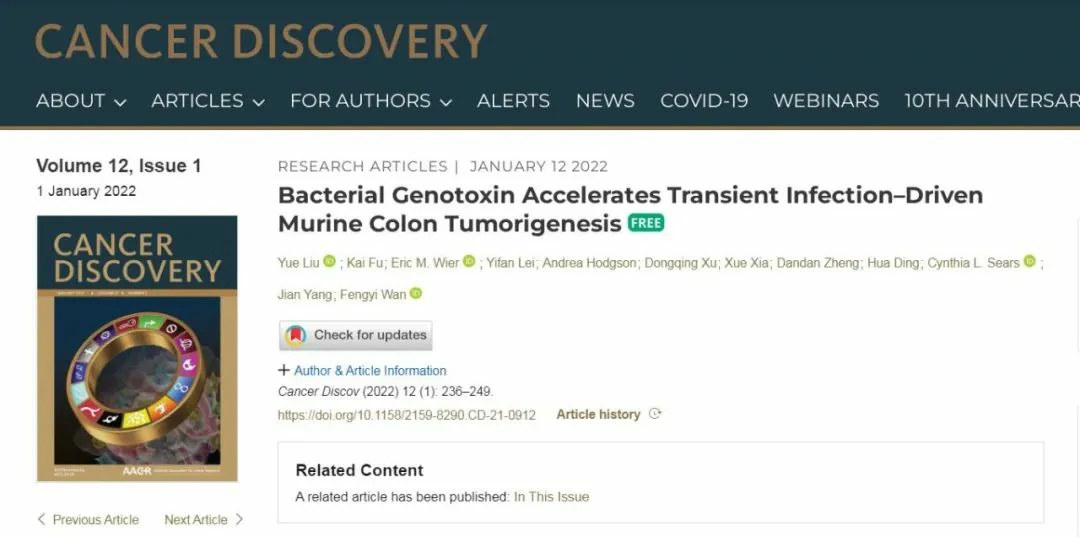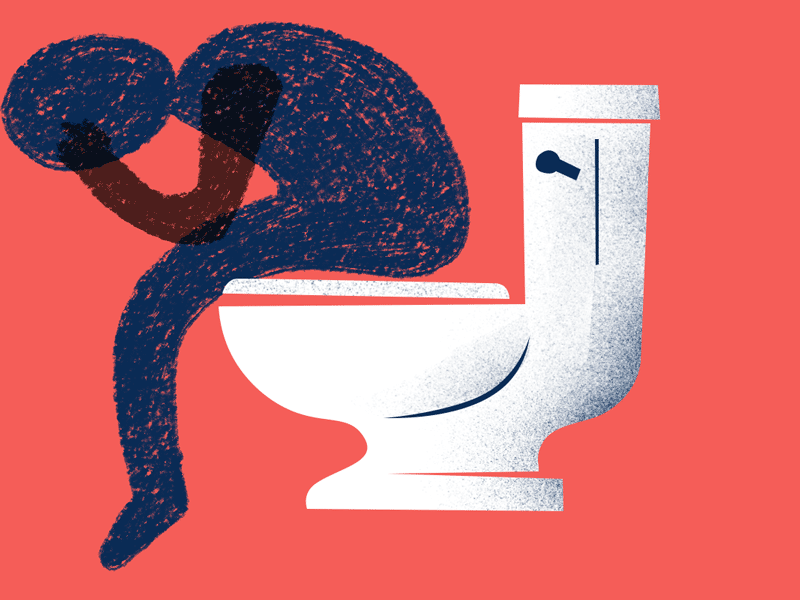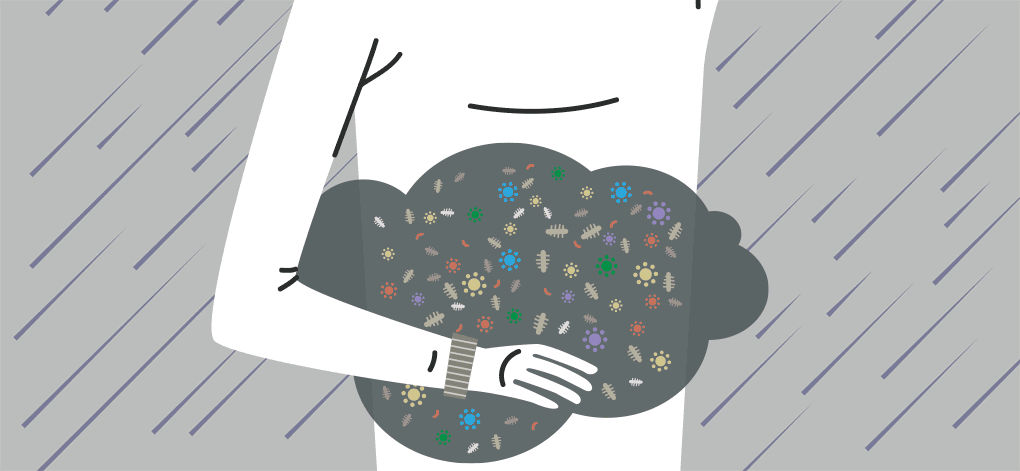This intestinal bacteria is on the "carcinogenic" blacklist! People with frequent diarrhea should be careful
Intestinal flora is the general term for the microbiota that resides in the human gut, which is related to the immune system, endocrine system, and other metabolic pathways of the human body.
If the balance of flora is destroyed, the health status of the human body will also change, and constipation, diarrhea, enteritis, etc. may occur, which may even affect life expectancy.

This gut bacteria is on the ‘carcinogenic’ blacklist
In a recent study published in the prestigious journal Cancer Discovery, researchers used enteropathogenic Escherichia coli and enterohemorrhagic Escherichia coli to assess the ability of adherent pathogens to induce bowel cancer.

They found that adherent pathogens in the gut can connect to intestinal epithelial cells through their type 3 secretion system (T3SS) and inject genotoxins to damage the DNA in the host intestinal epithelial cells, leading to cell carcinogenesis and colon cancer.
In 2020, the international authoritative journal “Nature” published an important study on colorectal cancer, and scientists put forward evidence that infection with specific intestinal bacteria can cause cancer mutations.

Escherichia coli are mainly epiphytes in the intestines of humans or animals, and most of them will not cause harm to the body, but can inhibit the reproduction of intestinal pathogens and other pathogens.
Some pathogenic Escherichia coli can cause diarrhea, hemorrhagic colitis, and other symptoms; and diarrhea, alternating constipation, defecation habits and changes in stool characteristics are important indicators for early detection of colorectal cancer

Therefore, when diarrhea occurs, don’t attribute it to excessive consumption of cold drinks, food deterioration, and other reasons. If you generalize, some diseases will become “fish that slip through the net”.
For the following 5 kinds of diarrhea, it is recommended to seek medical attention
Acute diarrhea, accompanied by frequent vomiting, fever, severe abdominal pain, or accompanied by dizziness, palpitation, dry mouth, oliguria, and other symptoms of dehydration.
Acute diarrhea, no relief within 48 hours.
Diarrhea with bloody mucus or melena.
Patients with chronic diarrhea, but also with a history of colorectal polyps or cholecystectomy, or a family history of colorectal cancer need to be vigilant.
Patients with long-term constipation in the past have recently had changes in bowel habits or traits, and diarrhea.
5 types of Escherichia coli can cause disease
Coliform is an indicator of food hygiene, including Escherichia coli, Citrobacter, Klebsiella aerogenes, and Clorox. Coliforms detected in food do not necessarily cause harm. However, the presence of pathogenic E. coli bacteria in the coliform flora can lead to foodborne illness.
There were three outbreaks of Escherichia coli in the United States in 1991, 1993, and 1996.
In 2014, there were more than 400 patients in the E. coli poisoning incident in Japan.

Pathogenic Escherichia coli are generally divided into 5 categories
Enteropathogenic Escherichia coli: Water or egg drop soup in infants and young children.
Enterotoxigenic Escherichia coli: Most of them have no obvious abdominal pain, and discharge watery stools more than ten times a day.
Enteroinvasive Escherichia coli: Fever, abdominal pain, diarrhea, mucus, and blood in the stool.
Enterohemorrhagic Escherichia coli: early watery stools, later bloody stools.
Enteroaggregative Escherichia coli: associated with intractable diarrhea in children.
Children, the elderly, pregnant women, and those with weakened immunity are at high risk of pathogenic E. coli infection. Although most patients can recover in a short time, the harm of some pathogenic Escherichia coli should not be underestimated.
For example, the main pathogenic strain O157:H7 in Enterohemorrhagic Escherichia coli has strong acid resistance and can resist the digestive effect of gastric acid, and it is easy for people to be poisoned when eaten.
It not only produces Shiga toxin (causing dysentery symptoms), but also attaches to the intestinal wall, causing damage to the intestinal mucosa, causing bloody diarrhea and hemolysis characterized by acute renal failure, hemolytic anemia, and thrombocytopenia Sexual uremia.
5 points to prevent pathogenic bacteria
Escherichia coli poisoning is a typical “disease from the mouth”. Following the five key points of food safety recommended by the World Health Organization can effectively prevent foodborne diseases such as Escherichia coli food poisoning.
- Keep your hands clean
Wash hands frequently, keep kitchen utensils clean; keep animals away from food.

- Raw and cooked food separation
Raw and cooked food are separated, and special kitchen utensils are used for handling raw food.
- Fully cooked food
The meat, poultry, and seafood are thoroughly cooked, and the soup is boiled; cooked food should be thoroughly reheated.
- Keep food at a safe temperature
Cooked and perishable foods are cooled promptly; refrigerators do not store foods for long; frozen foods are not thawed at room temperature.
- Use safe water and raw materials
Choose a reputable business place to buy food; wash fruits and vegetables; do not eat spoiled food.